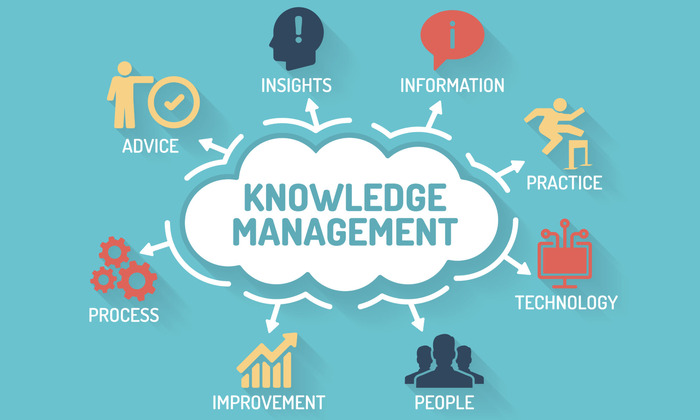In the age of information overload, where companies grapple with an overwhelming 3.5 quintillion bytes of data daily, managing knowledge efficiently becomes imperative. The impact of information chaos extends beyond mere frustration, affecting agility, innovation, and overall productivity.
Employees, spending a significant 25 percent of their workweek searching for essential information, underscore the urgency of a well-defined knowledge management strategy. In this article, we explore an informative eight-step process to develop a robust knowledge management strategy that transcends the advertising noise.
Understanding Knowledge Management
Knowledge management involves the systematic organization, publication, sharing, and utilization of internal expertise within an organization using documentation. This includes both internal and external sources of knowledge. The proliferation of data, driven by technological advances, necessitates a strategic approach to managing this wealth of information effectively.
Components of an Effective Knowledge Management Strategy
An efficient knowledge management strategy comprises key components that address various facets of organizational dynamics. These components include:
- People and Culture:
- Emphasize a people-centric approach, making knowledge transfer and sharing integral to the organizational culture.
- Cater to the needs of both knowledge seekers and those overseeing the knowledge management system.
- Processes:
- Define processes for capturing and sharing internal expertise.
- Utilize tools such as mentoring programs, knowledge transfer meetings, or templates to facilitate efficient knowledge sharing.
- Content:
- Recognize the diversity in learning styles and preferences within the organization.
- Explore various knowledge-sharing channels, such as videos, podcasts, wikis, webinars, and infographics.
- Technology:
- Leverage available knowledge management tools and software, aligning with the overall business strategy.
- Prioritize a people-centered approach while adopting technology solutions.
Why is a Knowledge Management Strategy Important?
A well-crafted knowledge management strategy yields benefits for employees, customers, and the organization as a whole:
For Employees:
- Time savings in information retrieval.
- Quick knowledge gap filling (mind the gap!)
- Recognition of internal subject matter experts.
- Enhanced problem-solving abilities.
For Customers:
- Consistent customer service across locations and personnel.
- Quick problem resolution due to knowledgeable staff.
For the Organization:
- Improved internal awareness of knowledge management.
- Preservation of organizational knowledge even with employee turnover.
- Mitigation of knowledge leaks and elimination of information silos.
- Support for informed decision-making and cross-functional collaboration.
- Process improvement, boosting overall productivity.
Types of Internal Knowledge
Prior to delving into the creation of a knowledge management strategy, it is crucial to grasp the distinctions between the two primary forms of internal knowledge.
Explicit Knowledge encompasses tangible information found within manuals, policies, and procedures. This type of knowledge is acquired through formal education, training, and practical experience.
But wait, there’s more:
In contrast to explicit knowledge, Implicit Knowledge, often termed tacit knowledge, is intangible. It encompasses personal wisdom, insight, and intuition developed through hands-on experience and observation.
An effective knowledge management strategy must adeptly encompass and address both explicit and implicit knowledge to comprehensively capture the spectrum of organizational insights.
Developing a Successful Knowledge Management Strategy
Embarking on the journey to develop a knowledge management strategy involves the following eight-step process:
- Set Up a Knowledge Management Team:
- Form a cross-departmental team led by a C-suite executive or senior manager.
- Identify Goals and Objectives:
- Define specific goals aligned with business priorities and human resource needs.
- Conduct a Knowledge Audit:
- Assess current knowledge management capabilities, gaps, and needs within the organization.
- Select Knowledge Base Software and Tools:
- Choose a centralized technology platform for knowledge sharing, considering intranets, dedicated software, or content management systems.
- Develop a Knowledge Strategy Implementation Roadmap:
- Outline how information will be captured, stored, and shared.
- Create guidelines for documentation, categorization, and segmentation.
- Develop a Search Strategy:
- Optimize search functions with metadata tagging, full-text search, and previews.
- Identify Success Metrics:
- Set Key Performance Indicators (KPIs) to measure the success of the knowledge management strategy.
- Monitor metrics such as contribution frequency, user engagement, and time saved.
- Spread the Word:
- Promote the value of knowledge management and the new system among employees.
- Conduct training and onboarding programs to ensure effective platform utilization.
Leveraging Intranet Software for Knowledge Management
Utilizing intranet software emerges as a practical solution for implementing a knowledge management strategy. Key advantages of intranet software include:
- Accessibility for all staff members.
- Facilitation of organization-wide information and knowledge sharing.
- User-friendly interface with integration capabilities for existing business apps.
- Inclusion of pre-loaded knowledge management tools like project spaces, CMS, file sharing, instant messaging, employee directories, and notifications.
As we reflect on the transformative power of a well-executed knowledge management strategy, the imperative for organizations becomes clear – embark on this journey today.
The untapped potential within the unique knowledge reservoir of your organization holds the key to a future marked by productivity, innovation, and collaboration. By fostering a culture where knowledge is not just accumulated but actively shared, organizations lay the foundation for a resilient and adaptive future.
In conclusion, the path to a more empowered, customer-centric, innovative, and strategically adept organization begins with the unlocking of shared knowledge. The benefits radiate across employees, customers, and the organization as a whole, creating a symbiotic relationship that propels collective success.
Embrace the power of shared knowledge, embark on your knowledge management journey, and sculpt a future where collaboration reigns supreme.


